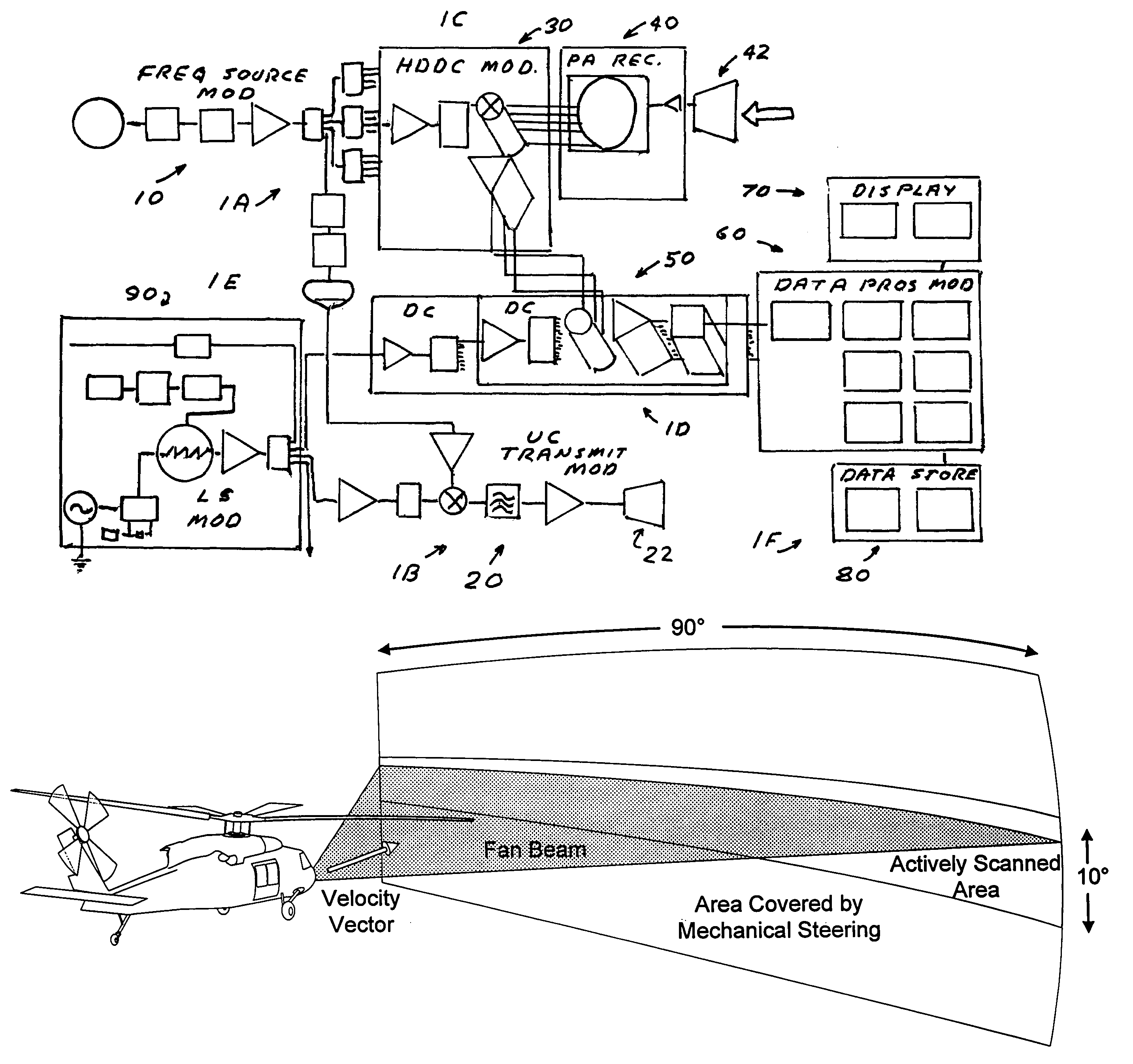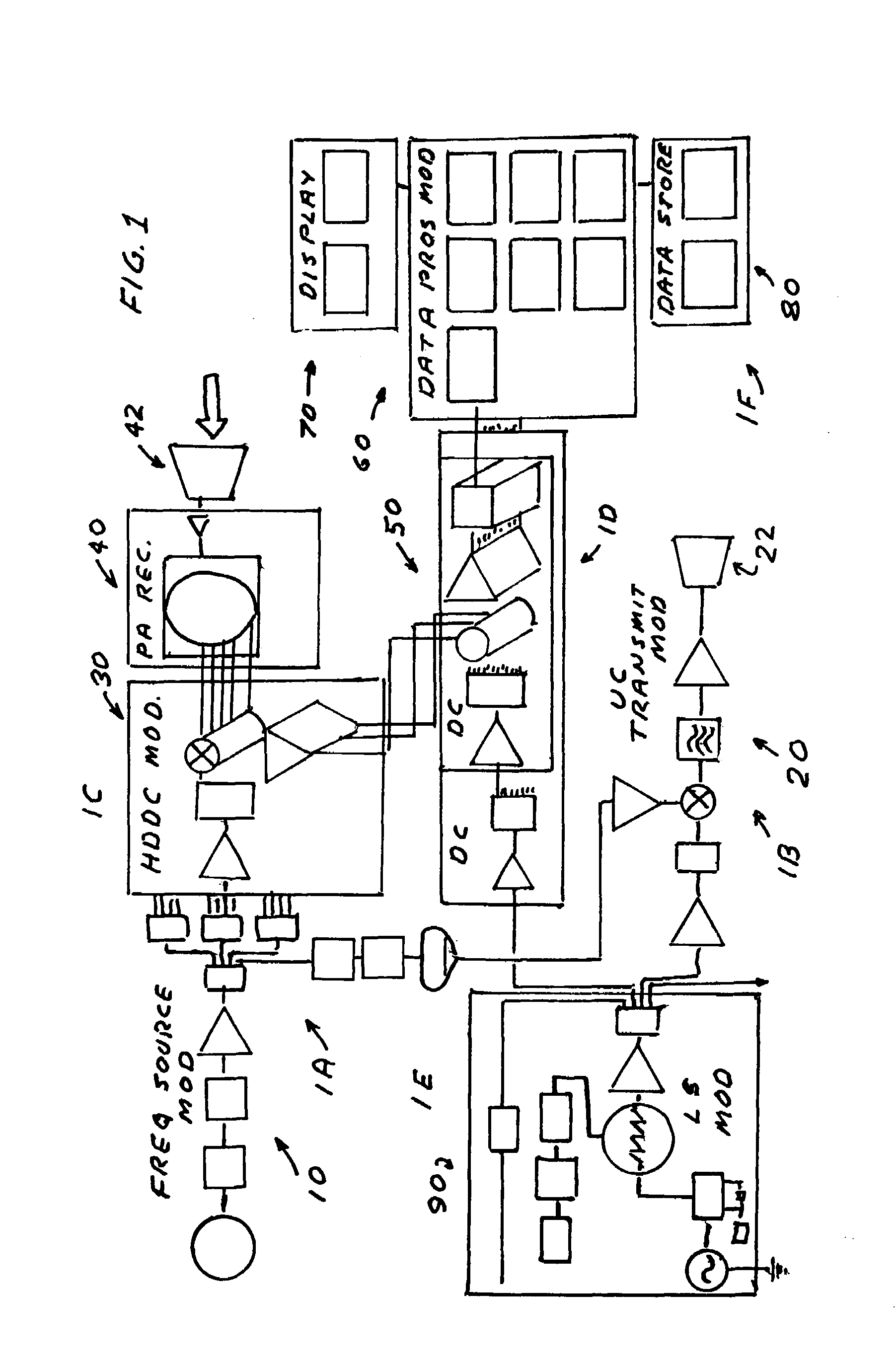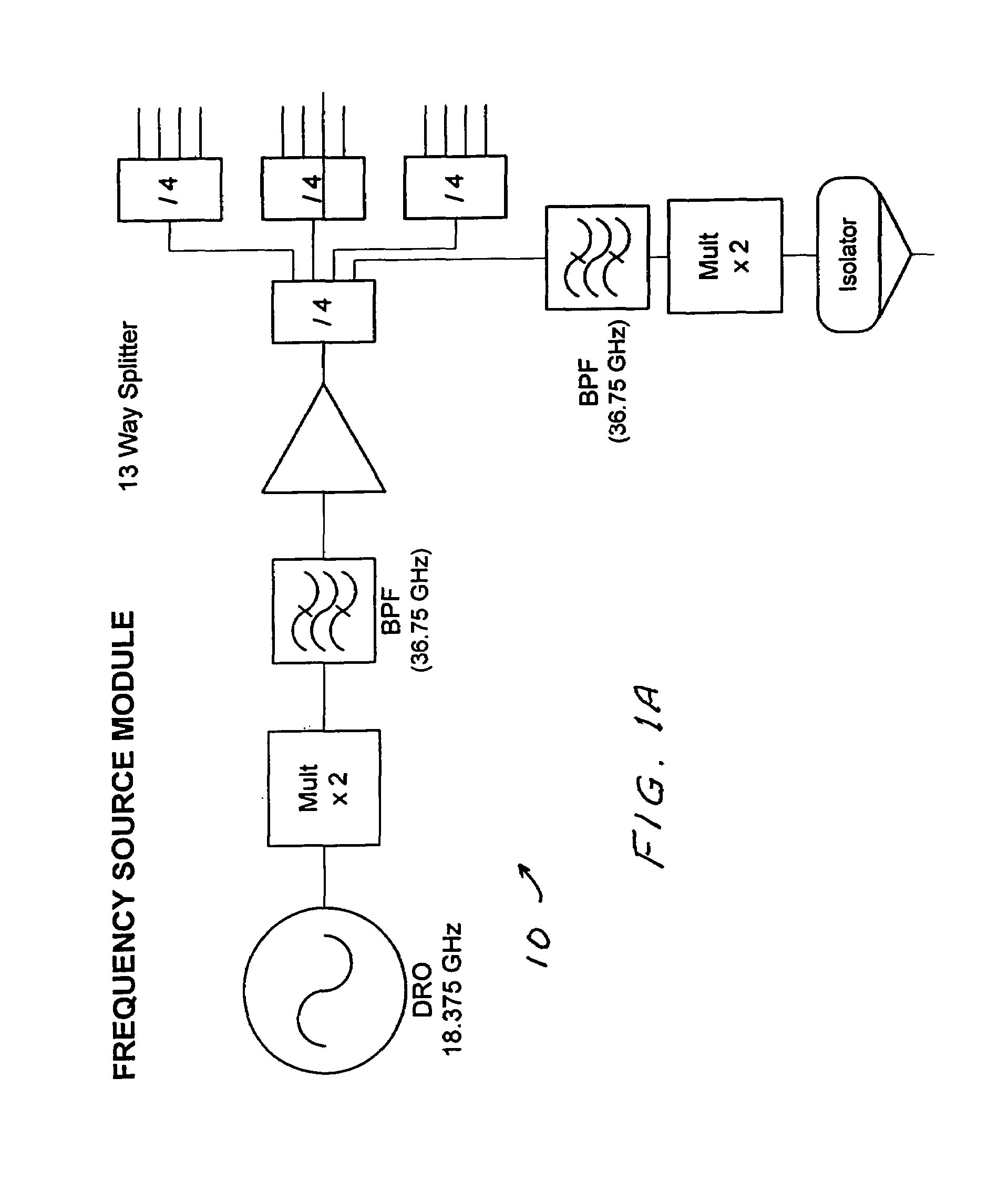Imaging millimeter wave radar system
a radar system and millimeter wave technology, applied in the direction of linear waveguide fed arrays, instruments, antennas, etc., can solve the problems of poor angular resolution of these systems, slow for many hazard avoidance applications, and especially for helicopters
- Summary
- Abstract
- Description
- Claims
- Application Information
AI Technical Summary
Problems solved by technology
Method used
Image
Examples
first preferred embodiment
[0018]A first preferred embodiment of the present invention is described in FIGS. 1 through 5D. It is an active illuminator married with a passive millimeter wave camera. This embodiment is a three dimensional W-band frequency modulated continuous wave (FMCW) active imaging radar system. It includes a frequency-scanned, phased-array receive antenna; a single-element, frequency-scanned transmit antenna and a 192-tap Rotman lens. The system employs a linear frequency modulated chirp radio frequency waveform sweeping from 78 to 81 GHz in 16.7 msec (60 Hz scan frequency) for a scan rate of 180 GHz / sec. The system provides the following capabilities:[0019]1. Operational range: 30 m to 1000 m.[0020]2. Hazard detection range: >500 m (⅜-inch wire @ 60° oblique angle).[0021]3. Field of view: 90° azimuth×10° elevation.[0022]4. Range resolution: 5 m.[0023]5. Cross-range spatial resolution: 9 mrad (5°) @ boresight.[0024]6. Transmitter frequency: chirped, 78 to 81 GHz.[0025]7. Transmitter power:...
second preferred embodiment
[0054]A second preferred embodiment of the present invention is useful for imaging at close distances with very poor visibility such as heavy fog or dust conditions. One such situation arises when attempting to land a helicopter in on a sandy or dusty field. The major changes in the radar's operational requirements relative to the first embodiment are those of significantly decreased operating range and significantly increased range resolution. Shorter ranges and larger return cross-sections lead to simplifications of the transmitter design, particularly in eliminating the need for a high-power millimeter-wave (MMW) amplifier, and of the receiver design, in eliminating the need for a low-noise MMW phased array receiver. On the other hand, the shorter operational range, as well as the need for greatly increased range resolution, limits the size of the antenna aperture that can be utilized and thus restricts the angular resolution of the radar. By returning to first principles of the ...
PUM
 Login to View More
Login to View More Abstract
Description
Claims
Application Information
 Login to View More
Login to View More - R&D
- Intellectual Property
- Life Sciences
- Materials
- Tech Scout
- Unparalleled Data Quality
- Higher Quality Content
- 60% Fewer Hallucinations
Browse by: Latest US Patents, China's latest patents, Technical Efficacy Thesaurus, Application Domain, Technology Topic, Popular Technical Reports.
© 2025 PatSnap. All rights reserved.Legal|Privacy policy|Modern Slavery Act Transparency Statement|Sitemap|About US| Contact US: help@patsnap.com



